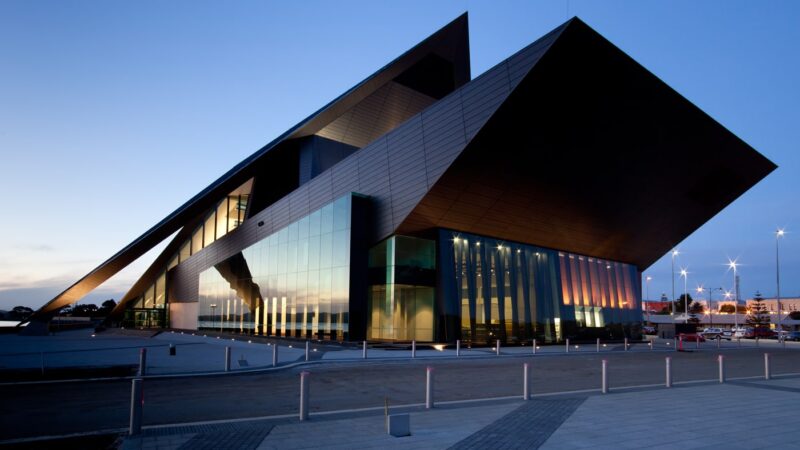
Float glass is a term used to refer to a sheet of glass, that is manufactured by floating the molten glass on a bed of molten metal. Though lead and other alloys with low-melting points were used in the past for making float glass, tin is typically used for the same now.
Float glass, which is also called annealed glass, is known for its particularly flat or smooth surface and uniform thickness. These glasses are clear, inexpensive, and easy to work with. Besides, these glasses are also durable, versatile, and energy efficient, which makes them an excellent choice as commercial glass for windows and doors.
Com-Al Windows brings a range of float glass, along with a variety of toughened, double-glazed, laminated, and other safety glasses, and commercial glass options for commercial windows for offices, apartments, and commercial buildings, in and around Western Australia.
Why is This Glass Called Float Glass?

The term “float glass” is given to these glasses because while manufacturing float glass, the molten glass is allowed to float freely in a bath of molten tin. This is what makes these glasses super smooth, without the obvious distortion, which is available in most other types of glasses.
The unique characteristic of float glass makes it fit for designing other glass items like laminated glass, heat-toughened glass, and more.
Float glass is undoubtedly one of the oldest forms of glass that exist today, and is distinguished for its varied applications. Its name, antiquity, and the dominance that float glass enjoys in the construction industry, often make most of us wonder about its manufacturing process.
So, let’s check out the manufacturing process of float glass in the section that follows!
How is Float Glass Manufactured?
Like in the manufacturing process of all the other types of glasses, the making of float glass also has a blend of raw materials.
Raw materials
The raw materials used in the manufacturing process of float glass include sand, limestone, dolomite, soda, and salt cake in its core.
The process of floating the glass
These materials are then melted in a furnace until they mix well with each other in the form of molten glass. This molten form of glass is then taken off the furnace and poured into a chamber, which consists of a bed of molten tin. This tub usually ranges from 4-8 metres in width and is primarily around 60 metres in length.
While the molten glass is in the tub of molten tin, it is ensured that the temperature inside is carefully controlled to make sure that the creation of float glass is done with perfection.
One of the main reasons for using tin is that tin is the only metal that remains stable even when it is liquid and at a temperature of as high as 600 °C.
The glass that floats on the tin, continues to do that while taking the shape of the container. It also spreads somewhere between 90-140 inches wide with varying thicknesses. This is ascertained at the time of manufacture of floating glass.
As soon as the floating glass assumes the shape, it is then polished with fire. While doing that one needs to ensure that only the upper surface, which is also termed as airside or score side, is fire-polished, while the lower surface needs to be set to cool down. This lower surface is the tin side.
Cooling the glass
To cool the glass it is moved from the tin chamber to a temperature-controlled oven called a lehr. This kiln is used for the glass to help it cool down at a specific rate. This process is also known as annealing.
The process of annealing helps the glass to relieve all its internal stresses and helps create a tough, smooth, and uniform sheet of float glass.
The annealing is a crucial step in the making process of float glass. Proceeding with the right rate of cooling is important because the wrong temperatures there would result in forming internal stresses and air bubbles.
Cutting the glass
Now, as soon as the glass is removed from the lehr, it appears as a continuous ribbon at room temperature. It looks flat, with a fire-finished topcoat, and with smooth, parallel surfaces.
Automatic cutters then come into play, which helps trim the edges and cut it into any desired length, to finish the glass with perfection. The thickness of the float glass can range from 0.4mm to 25 mm, as per the requirements.
Float glass is a popular form of glass that occurs in 5 main types, which are:
- Clear glass
- Extra clear glass
- Tinted glass
- Wired glass
- Patterned and textured glass
Float glass is used extensively today in numerous applications like in windows, mirrors, designer furniture, and more. So, if you also want to get float glass in your desired shape, size, and colour options, then reach out to Com-Al Windows Pty Ltd.
Com-Al is widely famous for the high-quality commercial aluminium glass windows and doors, curtainwalls, and more that it brings in and around Australia. Based in Perth, Western Australia, Com-Al Windows assures premium glass and aluminium doors, windows, and curtain walling systems that are tested in reputed Australian labs and are designed to meet Australian standards.



Leave a Reply